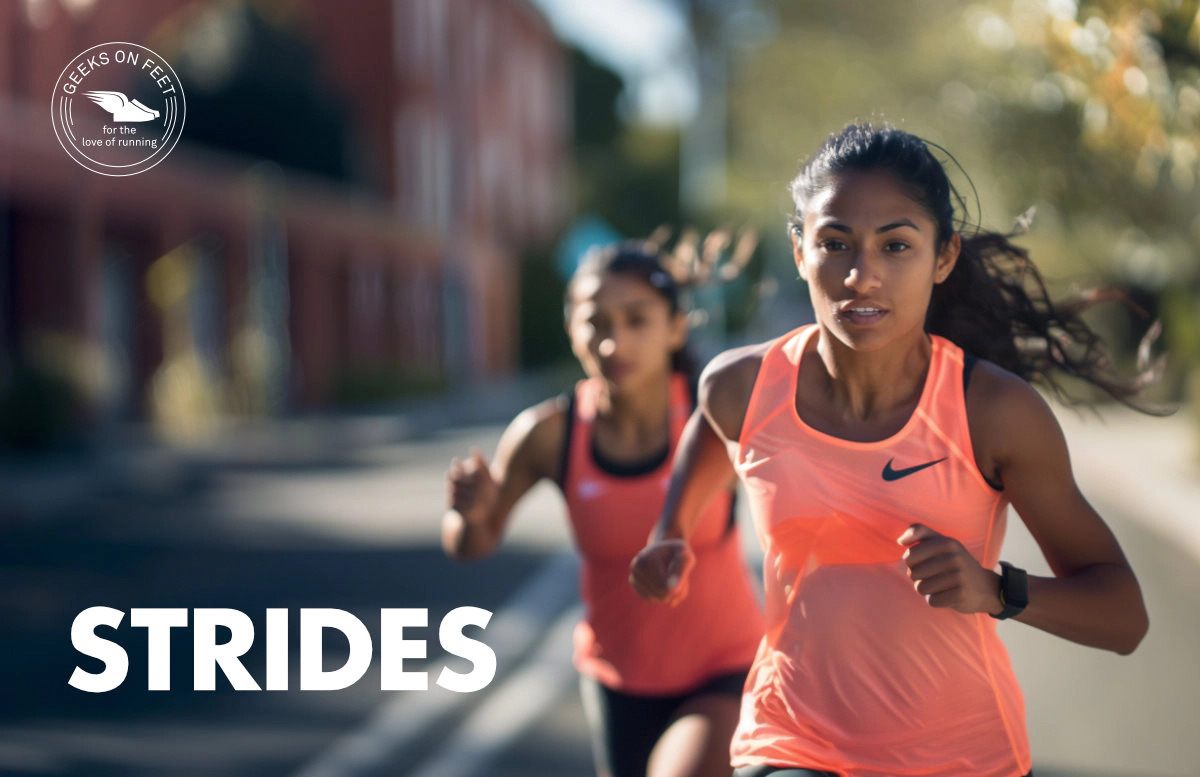
Strides are short bursts of fast running that might seem simple, but they are packed with benefits that can elevate your running performance and efficiency. In this article, we’ll break down what Strides are, why they’re essential for long-distance runners, and how to incorporate them into your training.
Strides are short, controlled sprints—lasting between 15 and 30 seconds—performed at about 85–95% of your maximum effort. They are not all-out sprints, but instead are meant to be relaxed and smooth, focusing on running with good form.
Strides can be done at the end of an easy run or before an intense workout to activate your muscles and fine-tune your running mechanics. Think of them as a way to “wake up” your legs while improving speed, efficiency, and running economy.
Running economy refers to how efficiently you use energy while running at a steady pace. The more efficient you are, the less energy you expend for a given pace. By practicing quick, efficient leg turnover during strides, you’ll naturally improve your cadence, stride length, ground contact time, and overall running mechanics, making it easier to sustain race pace during longer distances.
Jack Daniels, in Daniels' Running Formula, emphasizes that Strides help improve running economy and prepare you for faster running as you progress in fitness.
For marathoners and long-distance runners, training for speed (such as Interval training) can be tricky during heavy mileage phases. Strides are an excellent tool to keep your legs sharp.
In the book Science of Running by Steve Magness, Strides are a way to maintain speed during periods of heavy aerobic running as they reinforce good biomechanics and the recruitment of Fast Twitch muscle fibers.
Running fast isn’t just about building fast twitch muscles. Strides improve the communication between your brain and muscles, leading to better muscle fiber recruitment. Known as neuromuscular coordination, it’s critical for timing activation of the muscles.
In the book Science of Running by Steve Magness says, Strides can be used to work on running form or work a little on muscle recruitment in a semi fatigued state since they are performed after a distance run. Strides are a way of altering muscle tension, which basically means it is a way of getting “pop” in the legs so that the runner feels better the next day.
Strides and Lydiard Method
Arthur Lydiard (Legendary Distance Coach and Developer of Lydiard Method): Contrary to what many think, Lydiard method’s base is phase is not all slow runs. Lydiard advocates for controlled, relaxed strides 2-3 days a week (typically 10 x 100m) to improve muscle recruitment. While this running technically is anaerobic, the shorter nature of the strides means that the effort would never become anaerobic.
Strides can be incorporated into your training in a few key ways:
After Easy Runs: Adding 5 to 8 strides at the end of an easy run is a great way to include them in your routine. The idea here is to teach speed to your legs and focus on good form without adding much fatigue.
Before Speed Workouts: Strides can also be used as a primer before more intense interval or tempo sessions. They activate your fast-twitch muscle fibers and prepare your body to handle higher speeds during the workout.
Race Day Warm-Up: Before a race, strides help you get ready for the faster pace of the event. They help transition your body from a resting state to race readiness.
It is recommended to include strides once or twice a week.
Start Slow: If you’re new to strides, don’t push too hard too soon. Begin with 2–3 strides at the end of an easy run and gradually increase the number and effort over time.
Focus on Form: The primary benefit of strides is improved running mechanics, so pay attention to how your body feels. Keep your shoulders relaxed, your arms loose, and your legs moving quickly but smoothly. Lean the body from the ankle up (no bend at the hips).
Consistency is Key: Strides are most effective when done consistently. Try to incorporate them into your routine 2–3 times per week to see the most improvement.
Study on Strides
A study by Skovgaard et al. (2018) showed that adding 5–10 repetitions of 30-second maximal running efforts to your routine, along with reducing overall training volume by 36%, can boost running efficiency. The research found a 2% improvement in running economy and a 3.2% faster 10K time. Key changes happened in the muscles, including better energy use in slow-twitch fibers and improved muscle force transmission. Fast-twitch fibers also became more efficient.
Bottom line: Strides can help you run faster even while reducing the training volume. Link to the study
Strides may seem like a minor addition to your training, but they pack a punch when it comes to improving speed, running form, and efficiency.
So, next time when you head out the door, finish your next easy run with a few strides. Your legs (and personal best races) will thank you!
Compiled by Team GeeksOnFeet for the love of running